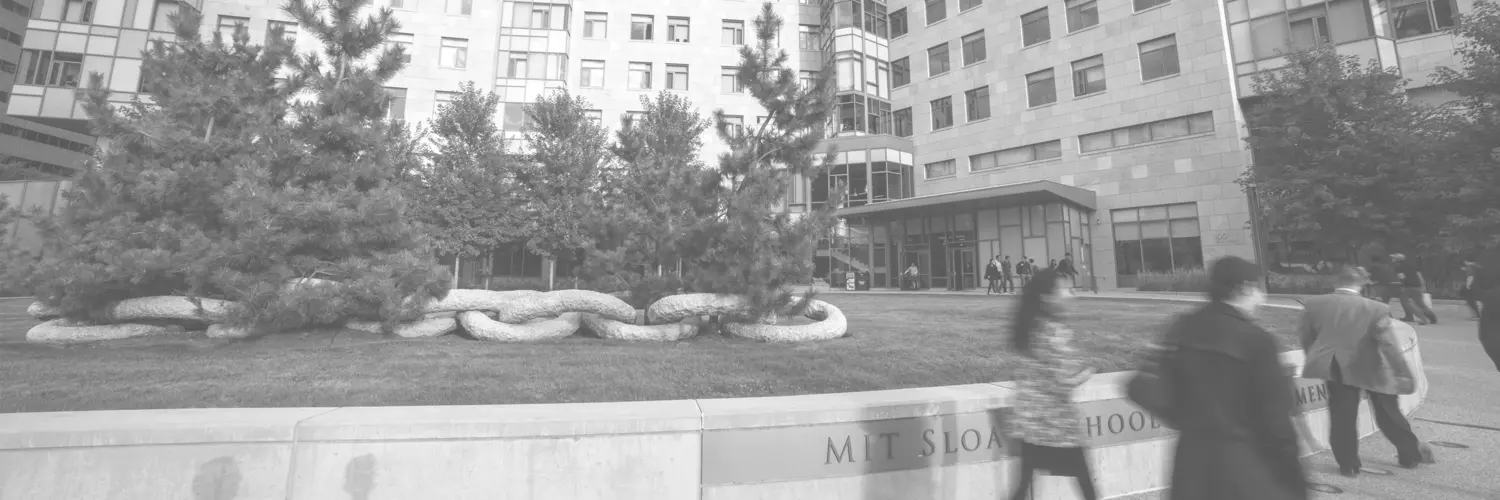was teaching at the University of Chicago’s business school when he first met Seymour Kahan of the United Automobile Workers union. The two of them were introduced by a mutual acquaintance, and they quickly bonded over discussions of the labor movement.
Recently, McKersie, now a professor emeritus at MIT Sloan, recalled the good fortune of this meeting. The UAW at the time was in negotiations with the International Harvester Company, and McKersie recognized a rare opportunity. He asked Kahan if he could sit in on internal UAW deliberations: How did they decide what positions to take, McKersie wondered? How did they decide, as a bloc, when to push and when to concede? Kahan told McKersie no; the meetings were off limits. But he agreed to be debriefed after each internal discussion.
These conversations, paired with similar interviews with a representative from the other side of the negotiating table, ultimately generated one of the four central insights of “A Behavioral Theory of Labor Negotiations,” coauthored by McKersie and his good friend Richard Walton and widely considered one of the most important books in the field of negotiation. From its intensely detailed description of negotiation tactics to its broad insights into the importance of mutual affinity between negotiating parties, the framework possesses almost universal applicability.
“The genius of the book is that, though derived from a very careful study of labor relations, it is applicable to every interaction between two or more people that have different points of view,” said , adjunct professor of negotiation at MIT Sloan, who for more than four decades served as an ombudsperson at MIT. “That’s just about everybody, all the time.”
The central pillars of “A Behavioral Theory”
Published in 1965, “A Behavioral Theory” distills the process of negotiation into four central “sub-process,” as McKersie and Walton call them. According to Rowe, it provides “the easiest fundamental theory of human behavior I have ever run into.”
The first two of these sub-processes are the closely related notions of “distributive” and “integrative” bargaining. Distributive bargaining refers to situations in which gain by one side is necessarily loss by the other. Integrative bargaining, on the other hand, is “where you come up with innovative ideas to bridge the gap,” McKersie said. In this case, both sides can claim victory by reframing or enlarging the issue under contention. There had been an intuitive understanding of these distinct aspects of negotiation before “A Behavioral Theory” was published, but how they worked and interacted was “crystallized and made famous by Walton and McKersie,” according to a reflection written on the occasion of the book’s 50th anniversary.
“The other two sub-processes, though, were not as well known and were probably where we really plowed new ground,” McKersie said. The first, known as attitudinal restructuring, maps out the importance of how parties feel during and after a bargaining process. Though subjective, this is an unavoidably material aspect of negotiations. Second, the intra-organizational side of negotiations — that is, what McKersie learned in conversation with Kahan about internal discussions and strategizing — “wasn’t understood at all” before the publication of “A Behavioral Theory.”
The book’s analysis, as McKersie notes in his new memoir, “A Field in Flux: Sixty Years of Industrial Relations,” rests on the careful and extensive analysis of transcripts taken from labor negotiations. This method, borrowed from Benjamin Selekman, a professor at Harvard Business School, allowed for close scrutiny of the subtle ways in which parties move toward or away from each other. “While not complete immersion in the room itself,” McKersie said, transcripts provided a second-best option.
The book’s enduring impact
More than a half-century after publication, the book remains central to the field of negotiation. “What’s interesting about the book is that it’s cited for many different reasons,” said , an associate professor at MIT Sloan who specializes in the psychology of negotiation and conflict resolution. “There are many applications because it covers so much ground — it’s the book that keeps on giving.”
Curhan pointed to his own relationship with the book. Much of his career has focused on developing and refining a field of research that looks at the so-called “subjective value” resulting from negotiations — not simply how resources are expanded and divided, but how the parties feel when they walk out of the room. Curhan has defined four dimensions of subjective value and, upon rereading “A Behavioral Theory of Labor Negotiations,” he realized that one of those four was already discussed under the rubric of attitudinal restructuring. He had the same experience again when embarking on a new research project to study subjective value at the group level. On this subject, too, McKersie and Walton had something to say in 1965. “This was another opportunity to rediscover the book,” Curhan said.
Another reason “A Behavioral Theory” has aged well, said , an assistant professor at MIT Sloan, is that it “integrates theories from psychology, economics, mathematics and applies them to real-world situations.” This “comprehensive framework” draws broad appeal.
Finally, McKersie attributes the book’s longevity to the fact that “others have developed case studies and refinements in a way that speaks to practitioners,” he said. In other words, they have built modern structures from its foundation.
When Rowe began teaching negotiations in the spring of 1985, 20 years after “A Behavioral Theory” was published, she spent much of New Year’s vacation rereading the book, taking notes, and diagramming the various aspects of negotiation and how they interact. At the end, “I had two pages on different bargaining tactics and the various sources of power,” she said. She began to build case studies and examples around her notes. “And, like hundreds of others, I found the platform simple and easy to understand once I had the bones and exceptionally easy to apply in teaching and in my professional work.”
The modern relevance of a classic
Curhan explained that, beyond the classroom, the book offers a fundamental lesson almost universally ignored by people in negotiations — to their detriment. “There is a prevalent belief that negotiation is like a battle, or a seesaw, where any gain to one side is an equal loss to the other side, and the book makes it clear that that’s a mistake. That analogy, that way of thinking, is not actually accurate,” he said. With a bit of creativity and cooperation, the pie can often be expanded; both sides can come away with more than they thought possible and feeling better about each other than they would have.
As Rowe noted, the work also carries implications beyond the realm of negotiation as generally defined. In 2007 for instance, McKersie and Walton were recruited into the intelligence community to help think through tactics for engaging military detainees during interrogation. “We were intrigued with this subject where there is so little common interest between the detainee and the agency that apprehended the individual,” McKersie said. “How do you, in a sense, gain something that’s important to the agency but, at the same time, treat the detainee properly and with respect? We waded into this area when there was so much publicity about the terrible ways people thought you could obtain information.”
Rowe also described her extensive use of the book’s insights over the course of her career as university ombudsperson, a role that revolved around conflict management. “I have dealt with thousands and thousands of people who feel they are in a cage, stuck, frozen in place with no options,” she said. “But the tools derived from this book have actually been a great form of solace and comfort to many people facing serious conflict or problems.”
A form of solace and comfort — an unexpected description of an academic textbook, and something that McKersie and Walton most likely never considered when they were deep in the weeds, analyzing transcripts between unions and companies, considering the fine theoretical points of labor negotiation as they stood in the middle of the 20th century. “It does not happen very often that somebody comes up with ideas that are so useful on a daily basis,” Rowe said.



